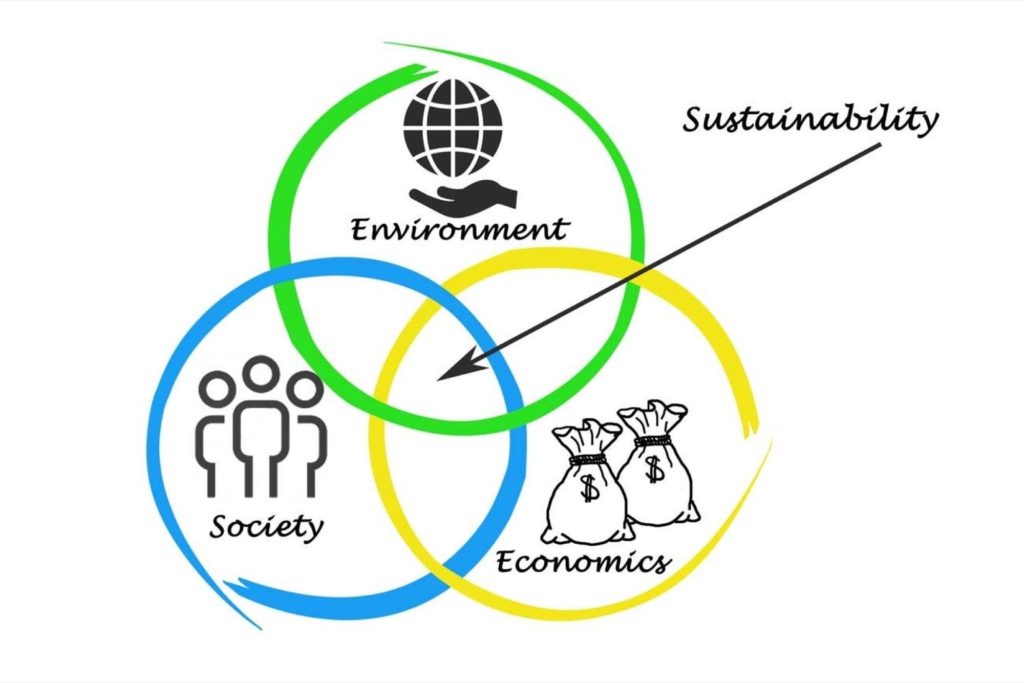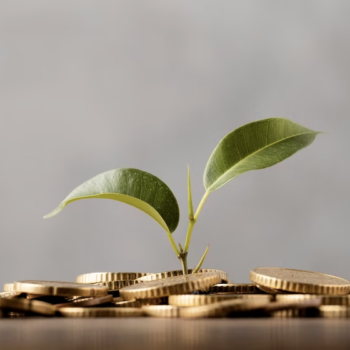|
|
In an era where our planet’s resources are under increasing pressure, businesses are called upon to play a vital role in creating a sustainable future. This notion is no longer simply a lofty ideal but rather a practical necessity. Economic viability is now tied to environmental responsibility, and embracing this truth is the key to success in today’s business landscape.
The concept of a sustainable business model represents a significant shift from traditional ways of thinking. It is not merely about incorporating eco-friendly practices into existing structures but rather about building enterprises from the ground up with sustainability as their foundation. Such models prioritize long-term value creation over short-term profit maximization, ensuring that businesses not only survive but also thrive in tomorrow’s world.
This article can serve as your step-by-step guide to understanding, designing, and implementing a sustainable business model. Below, we delve deep into the nuances of what makes a business model truly sustainable and provide tips on how you can adapt your own organization to meet these 21st-century demands.
So if you’re ready to join the revolution toward responsible capitalism, read on to learn more.
Key Takeaways
- Sustainable business models prioritize long-term value creation over short-term profits, marrying economic viability with environmental responsibility.
- The pillars of sustainability include economic viability, social equity, and environmental responsibility, which are interconnected in successful sustainable business models.
- Designing a sustainable business model requires defining purpose beyond profit, identifying key resources, target market, value proposition, establishing an efficient revenue model, and continuous refinement.
- Transitioning existing businesses towards sustainability involves auditing current operations, setting measurable goals, developing action plans, engaging employees, and monitoring progress.
- Implementing a sustainable business model can face challenges such as securing stakeholder buy-in, dealing with initial costs, and overcoming resistance to change.
Understanding Sustainable Business Models
A sustainable business model is one that creates, delivers, and captures value in a manner that is both economically viable and environmentally sound. It takes into consideration the long-term impacts of business operations rather than focusing solely on short-term profits.
This type of holistic approach ensures the longevity of the business while preserving natural resources and reducing negative environmental impacts.
Understanding sustainable business models requires a shift in mindset. It’s about acknowledging that profitability and sustainability aren’t mutually exclusive but rather complementary.
Profitability ensures a business remains functional and competitive, while sustainability guarantees its endurance and relevance in an increasingly eco-conscious world.
The Pillars of Sustainability: Economic, Social, and Environmental
The three pillars of sustainability — economic viability, social equity, and environmental responsibility — form the foundation of sustainable business models. Each pillar bears significance and is interconnected with the others, creating a robust structure for businesses that wish to thrive in today’s evolving market landscape.

Image source: https://www.entrepreneur.com/en-in/growth-strategies/6-effective-ways-to-build-a-sustainable-business/252029
Economic sustainability revolves around the financial aspects of a business. It involves generating enough revenue to sustain operations, invest in growth, and deliver a return on investment to stakeholders.
It’s about finding that balance between maximizing profits and minimizing costs, all while ensuring fair trade practices and equitable wealth distribution. Economic sustainability also means investing in sectors that have long-term viability and not merely those offering short-term monetary gains.
Social sustainability focuses on the human element within the business process by promotingsocial equity, providing decent work conditions, ensuring employee well-being, and encouraging community development. A socially sustainable business emphasizes inclusivity, diversity, and fairness and strives to contribute positively to society.
Environmental sustainability emphasizes the importance of respecting our planet’s limitations and making conscious efforts to reduce harmful impacts on the environment. This could be achieved through using renewable resources, reducing waste, minimizing carbon footprint, or incorporating green technology into business operations.
Each of these three pillars, together and on its own, is integral to building a sustainable business model. They provide a roadmap for businesses to follow if they aspire to be sustainable in the truest sense of the word — profitable, socially responsible, and environmentally friendly.
Designing Your Sustainable Business Model: A Step-by-Step Process
Designing a sustainable business model is not just a task that you should cross off your list of “to do” things without giving it a second thought, but a journey of aligning your business operations with the principles of sustainability. Such a process requires thoughtfulness, commitment, and a willingness to innovate.
- First, you should define your purpose beyond profit. Identify the ways in which your business can create a positive impact on society and the environment. This might involve addressing a societal issue, developing an eco-friendly product, or simply reducing your environmental footprint.
- In the second step, identify key resources that are essential to delivering this value. These could include raw materials, human capital, technology, or partnerships. You should consider their availability over the long term and how their use impacts the environment and society.
- The third step involves identifying your target market — consumers who value sustainability and are willing to support businesses that embody it. Understanding their needs and expectations is crucial in shaping your products or services.
- In the fourth step, it’s essential to commit to crafting a compelling value proposition that showcases your unique offering. It should clearly articulate how your product or service is not just beneficial for the customer but also for the wider community and environment.
- The fifth step is to establish an efficient revenue model that allows you to capture value while maintaining your commitment to sustainability. This could involve adopting a circular economy approach, where waste is minimized, and resources are reused, or it could mean partnering with other sustainable enterprises.
- Finally, once you’ve designed your model, it’s important to continually review and refine it based on changing market dynamics and evolving customer needs. Sustainability is a journey, after all, not just a destination.
The steps outlined above are just the beginning of what can be an enriching journey toward building a truly sustainable business model that stands the test of time while positively contributing to society and the environment.

Image source: https://bigbangpartnership.co.uk/sustainable-business-model-innovation/
Adapting Existing Businesses Towards Sustainability
Adapting an existing business towards sustainability is both a challenge and an opportunity. It involves recognizing the need for change and then strategically implementing new practices that align with sustainability principles.
This transformation process can be started by conducting a comprehensive audit of your current operations. Understand your environmental impact, examine your supply chain, and assess your energy usage — these assessments will help you identify where changes can be made for greater sustainability.
Next, set clear and measurable sustainability goals based on your audit findings. This might involve reducing greenhouse gas emissions, improving waste management, or investing in renewable energy sources. It’s vital to ensure these objectives are realistic, achievable, and aligned with your overall business strategy.
Once the goals are set, develop a detailed action plan outlining how they will be achieved. This may require investing in new technologies or retraining staff to adapt to new working methods. Remember to make your plan flexible to accommodate unforeseen challenges or opportunities that may arise along the way.
Engage your employees in the sustainability transition by fostering a culture of responsibility and empowerment. Provide training and education about why sustainability matters and how each team member can contribute. Their buy-in and participation are crucial for the successful implementation of sustainable practices.
Lastly, monitor progress regularly against your goals and adjust your strategies as needed. Celebrate achievements to reinforce commitment among team members and communicate your efforts transparently to stakeholders.
Transitioning towards sustainability is not a one-off project but an ongoing commitment. It requires patience, resilience, and a willingness to innovate. However, the benefits — enhanced reputation, long-term financial stability, increased customer loyalty, and positive environmental impact — make it worth every effort.
Overcoming Challenges in Implementing Sustainable Business Models
Implementing a sustainable business model is not without its challenges. From resistance from stakeholders to dealing with initial costs, the road to sustainability can be a testing one. However, these hurdles are manageable and can be overcome with thoughtful strategies.
A common challenge is securing stakeholder buy-in. Not all stakeholders might comprehend the long-term benefits of shifting towards a sustainable business model. To overcome this, it’s essential to communicate your vision clearly and consistently, emphasizing the potential for long-term growth and risk mitigation. Regular progress reports that highlight early successes can also help in convincing skeptical stakeholders.
Another possible hurdle is the perceived high costs associated with implementing sustainability strategies. While some sustainable practices may require up-front investment, they often lead to substantial cost savings in the long run through increased efficiency and reduced waste. Therefore, it’s crucial to consider these expenses as investments rather than mere costs.
Resistance to change within the organization can also pose a challenge. This resistance can be minimized by fostering an inclusive culture where employees feel part of the sustainability journey. Providing training and resources to help them understand the importance of sustainable practices and how they can contribute can significantly reduce resistance.
Overcoming these challenges requires perseverance, clear communication, and a strong commitment to your sustainability goals.
In Conclusion
As we continue to grapple with global challenges such as climate change, resource depletion, and social inequality, it becomes increasingly clear that businesses must play a crucial role in creating a more sustainable world.
Embracing sustainability is just about mitigating risks or complying with regulations; it’s about reshaping business strategies for long-term success. It involves creating products and services that not only meet consumer needs but also contribute positively to society and the environment.
In this future landscape, innovation will be key. Companies that can develop sustainable solutions will have a competitive advantage. These innovations could be in the form of new products, processes, or business models that reduce environmental impact, improve resource efficiency, or address social issues. This way, businesses can ensure their own survival while contributing to a more sustainable world.












